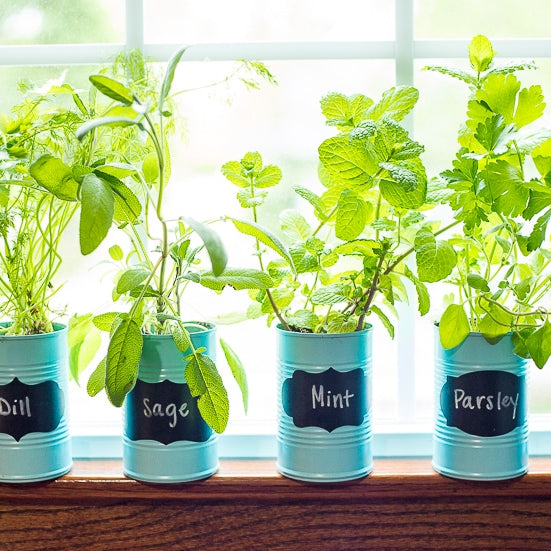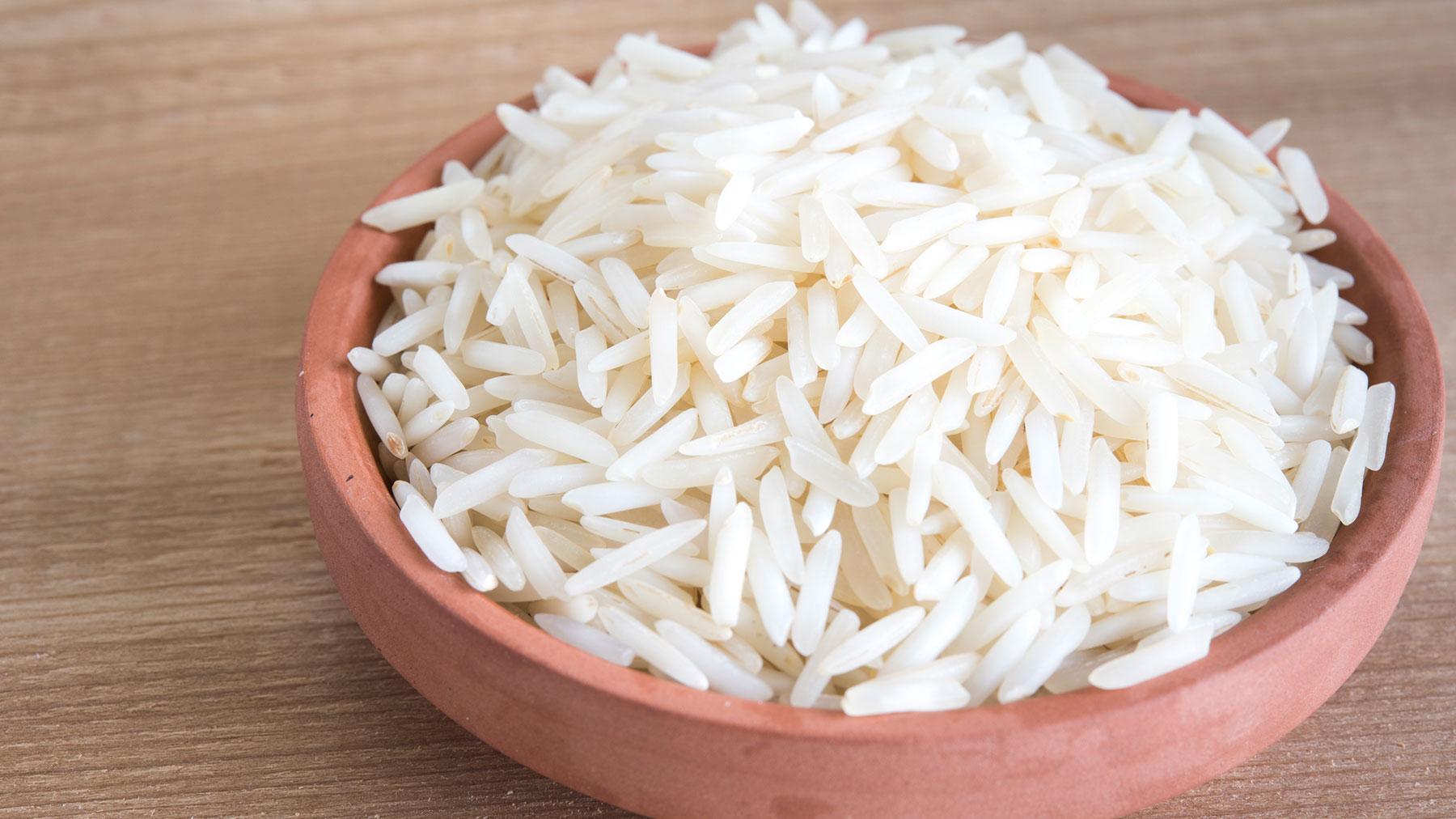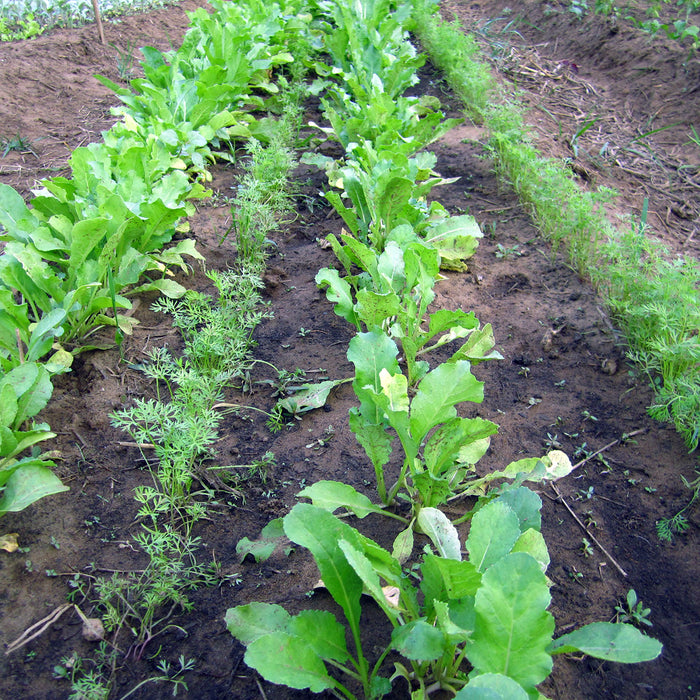

The Ultimate Guide to Storing Rice for Economic Collapse
Learn how to store rice for long-term survival and food security during an economic collapse. Our comprehensive guide covers everything from choosing the right type of rice to preparing it for storage, and provides tips on how to store rice in mylar bags, airtight containers, and other long-term storage options. With this guide, you'll have the knowledge and tools to ensure that you and your family have access to a reliable food source in times of crisis.
Polished rice, commonly referred to as white rice, is a staple food for over half of the global population. Its versatility, high caloric value, and long shelf life make it an excellent addition to home food storage. To ensure a one-year supply for a family, it's recommended to store approximately 300 lbs of grains per person.
However, the amount of rice to store per person may vary based on personal preference, with a suggested range of 25 to 60 lbs. In the United States, there are three types of white rice: long, medium, and short, all of which are distinct from brown rice. Additionally, there are several varieties of specialty rice available.
Long-grain polished rice is characterized by its elongated shape, being about three times longer than it is wide. Once cooked, it has a firm and fluffy texture, without being sticky.
On the other hand, medium-grain polished rice is roughly 2 to 3 times longer than it is wide. Cooked medium-grain rice in the United States is soft, moist, and sticky in texture.
Lastly, short-grain rice has a length that is less than twice its width. It is stickier compared to other rice types and is often referred to as sushi rice.
There are several specialty rice varieties available, including Arborio, Basmati, Della or Dellmont, Japanese premium, Jasmine, Toro, and Waxy. However, there has been no analysis conducted to determine which variety stores best over the long term.
Raw rice consists of three layers: the hull, bran, and kernel. During the polishing process, the hull and bran layers are removed from the kernel of polished rice. Prior to milling, raw rice may undergo parboiling, which involves soaking in water and steaming under high pressure. This process causes the natural vitamins and minerals from the rice bran layer to transfer to the kernel.
Quality & Purchase
Purchase quality rice grains from a trusted source. Inspect rice for insects or discoloration, prior to preparing for home storage.
Storage Conditions
The best temperature to store grains, including rice, is 40°F or below; however, rice stored at a constant 70° F with food grade oxygen absorbers will store well for up to 10 years. In cooler storage areas rice sealed in oxygen-free containers can be stored for up to 30 years. A BYU study sampling polished rice and parboiled rice stored from 1 to 30 years found that both types of rice will keep their nutrients and flavor up to 30 years.
Avoid exposing it to light
Uncooked rice should be stored in a dark place to prevent it from becoming discolored or going rancid due to exposure to light. Consider storing it in an opaque container or using a brown paper bag to keep light out. This will help to preserve the quality of the rice and keep it fresh for longer.
Nutrition & Allergies
In the United States, vitamins and minerals: iron, niacin, thiamin, and folic acid are added to rice. Rice is high in starch and fiber. In addition, rice is low in sodium and a good source of protein. There are no known common allergies to rice or its constituents.
Shelf Life
When properly sealed and stored, polished white rice will store well for 25 to 30 years.
Use From Storage
After opening use rice within one to two years.
Now, for the fun part: How to Store Rice Long-term
Step 1: Choose the Right Type of Rice
When it comes to storing rice, choosing the right type is essential. Not all rice is created equal, and selecting the wrong type could mean the difference between having edible rice for years to come or having a bag of moldy, inedible grains. Therefore, it's crucial to know what type of rice is best for long-term storage.
White rice is one of the most popular types of rice for long-term storage, and for a good reason. As mentioned, it has a longer shelf life than brown rice because the bran and germ have been removed. The bran and germ contain oils that can turn rancid over time, which can cause the rice to spoil. By removing them, white rice has a significantly longer shelf life and is less likely to spoil or attract pests.
Another option for long-term rice storage is parboiled rice. Parboiled rice is rice that has been partially boiled in the husk, which makes it more resistant to spoilage and insect infestations. It also has a longer shelf life than brown rice and is more nutritious than white rice because it retains some of the bran and germ.
Basmati rice is another popular option for long-term storage. This type of rice has a long, thin grain and a distinctive aroma. Basmati rice has a low starch content, which means it stays firm and doesn't stick together when cooked. It also has a long shelf life and can last for several years if stored properly.
Finally, jasmine rice is a fragrant long-grain rice that is popular in Southeast Asian cuisine. Like basmati rice, jasmine rice has a low starch content, which makes it fluffy and light when cooked. It also has a long shelf life and is an excellent option for long-term storage.
In summary, choosing the right type of rice for long-term storage is critical. White rice, parboiled rice, basmati rice, and jasmine rice are all excellent options, each with their own unique properties. By selecting the right type of rice, you can ensure that your rice stays fresh and edible for years to come.
Step 2. How to Prepare Rice for Long Term Storage
To prepare your rice for storage, you'll need a few supplies, including a large bowl or container, a strainer, and a clean towel or paper towels. Here's how to do it:
- Check your rice for foreign objects: Before you start storing your rice, it's important to check it for any foreign objects. Look for stones, twigs, or any other debris that may have made its way into the bag. Removing foreign objects will prevent them from damaging your rice and ensure that it stays fresh for longer.
- Rinse your rice: After removing any foreign objects, rinse your rice thoroughly with cold water. Rinsing will remove any dust or dirt that may be on the rice and help it stay fresh. You can do this by placing your rice in a strainer and running it under cold water for a few minutes.
- Dry your rice: After rinsing, it's crucial to dry your rice completely. Excess moisture can lead to mold and bacterial growth, which can ruin your rice. Use a clean towel or paper towels to pat your rice dry, or spread it out on a clean towel and let it air dry for a few hours.
- Let your rice cool: Allowing your rice to cool down properly is an important step in the rice storage process. When rice is cooked, it releases moisture and steam, which can create condensation inside the storage container if it's not allowed to cool properly. This can lead to mold growth, bacteria, and spoilage, which can make the rice unsafe to eat.
- To let your rice cool down, first, remove it from the heat source and transfer it to a clean, dry container. Spread it out in a thin layer to help it cool more quickly. You can also stir it occasionally to help distribute the heat and speed up the cooling process.
It's important to note that you should not leave your cooked rice out at room temperature for more than 2 hours to avoid the risk of foodborne illness. Therefore, if you need to store the rice for later use, it's essential to cool it down quickly before storing it.
- Store your rice in an airtight container: The key to long-term rice storage is keeping it in an airtight container. This will prevent moisture, insects, and other contaminants from getting in and spoiling your rice. You can use a plastic or glass container with a tight-fitting lid or a resealable plastic bag. Make sure the container is completely dry before storing your rice in it.
Mylar bags are a popular choice for storing food, including rice, for long periods. These bags are made of a durable material called BoPET (biaxially-oriented polyethylene terephthalate) and have a metallic appearance. Mylar bags are known for their high barrier properties, which help to protect the contents from moisture, oxygen, and other contaminants. Here are some key benefits of using Mylar bags for rice storage:
-
Durability - Mylar bags are designed to be strong and tear-resistant, making them an excellent choice for long-term storage.
-
Barrier Properties - Mylar bags have excellent barrier properties, which can help protect food from moisture, oxygen, and other contaminants. This helps to keep the rice fresh and free from spoilage.
-
Versatility - Mylar bags come in a range of sizes and can be used for storing a variety of foods, including rice, grains, pasta, and more.
-
Easy to use - Mylar bags can be sealed using a heat sealer or an iron. Once sealed, they provide a secure and airtight seal that helps to protect the food inside.
-
Long shelf life - When stored properly, Mylar bags can help to extend the shelf life of rice for up to 25 years or more.
While Mylar bags can be an excellent choice for storing rice, there are a few things to keep in mind. First, it's important to use high-quality Mylar bags that are food-grade and free of contaminants. Second, it's essential to store the bags in a cool, dry place, away from direct sunlight, moisture, and heat sources. Finally, it's a good idea to use oxygen absorbers inside the Mylar bags to help protect the rice from oxidation and spoilage.
Step 4: Add Oxygen Absorbers
To further extend the shelf life of your rice, you can add oxygen absorbers to your storage container. Oxygen absorbers remove oxygen from the container, which helps to prevent oxidation and the growth of bacteria and mold.
Step 5: Store Your Rice in a Cool, Dry Place
Finally, you'll want to store your rice in a cool, dry place. Basements, root cellars, and cool closets are all good options. Avoid storing your rice in areas that are prone to moisture, such as bathrooms or laundry rooms. Ideally, you want to store your rice at a temperature between 40 and 70 degrees Fahrenheit.
Supplies You'll Need:
- Bulk USDA Certified Organic Non-GMO Rice
- Airtight storage container
- Food Grade Oxygen absorbers
- Dehydrator (optional)
- Vacuum sealer (optional)
- Mylar Bags
Tips on How to Store Cooked Rice for Extended Freshness and Safety
Cooked rice is a convenient and versatile food, but storing it properly can be challenging. To ensure your cooked rice stays fresh and safe for an extended period of time, here are some tips to follow:
-
Use an airtight container: To keep out moisture and prevent unwanted odors or flavors, store your cooked rice in an airtight container. Consider using a glass jar, plastic container, or vacuum-sealed bag for storing cooked rice.
-
Refrigerate cooked rice promptly: Refrigerate cooked rice as soon as it is cooled down to prevent bacteria growth. Avoid storing it at room temperature for more than 2 hours, as it increases the risk of bacterial growth.
-
Use within 3-4 days: Cooked rice should be used within 3-4 days of being cooked and refrigerated, as it can develop harmful bacteria over time.
-
Reheat properly: To kill any bacteria that may have developed, reheat cooked rice to a safe internal temperature of 165°F (74°C) before eating.
-
Avoid reheating multiple times: Reheating cooked rice multiple times can make it dry and hard, affecting its quality. To maintain its texture, reheat only the amount you plan to eat and store the remainder properly in the refrigerator.
-
Freeze for future use: If you have cooked rice left over and you’re not going to eat it within a day or so, you can freeze it for future use. Allow the rice to cool completely, then transfer it to an airtight container or freezer bag. Freeze for up to 6 months. Thaw the rice in the refrigerator before reheating to a safe internal temperature of 165°F (74°C) before consumption.
Conclusion:
Storing rice for the apocalypse may seem daunting, but with the right supplies and a little bit of know-how, it's actually quite simple. By following these steps, you can ensure that your rice stays fresh and edible for years to come. Whether you're preparing for a natural disaster or simply looking to save money by buying in bulk, long-term rice storage is a smart choice. So go ahead and stock up on your favorite variety of rice – you'll be glad you did when the apocalypse hits.
References
- Briefing - Rice: Background. (2008). Retrieved June 20, 2008 from www.ers.usda.gov
- Connor, W. E., & Conner, S. L. (n.d.). Rice- based diets: Nutritional properties. Retrieved July 8, 2008 from www.faqs.org
- Coons, L., Halling, M., Lloyd, M. A., Ogden, L. V., & Pike, O. A. (2004, July). Quality of regular and parboiled rice in long-term storage. Poster presented at the Institute of Food Technologists Annual Meeting, [LOCATION].
- Coons, L., Halling, M., Lloyd, M. A., Ogden, L. V., & Pike, O.A. (2004). Quality of regular and parboiled rice in long-term storage. IFT Book of Abstracts, No. 99F-8, 272.
- Halling, M. B., Van Noy, N. D., Ogden, L. V., & Pike O. A. (2003, July). Quality of white rice retail packaged in No. 10 cans for long-term storage. Poster presented at the Institute of Food Technologists Annual Meeting, [LOCATION].
- Kansas State University Cooperative Extension Service. (n.d.). Cupboard approximate storage times. Retrieved June 26, 2008 from www.uga.edu
- Pahulu, H. F., Davidson, R. T., Dunn, M. L., Ogden, L. V., Steele, F. M., & Pike, O. A. (2007). Change in mutagenicity in white rice after accelerated and long-term storage. Journal of Food Science, 72 (2), C126-C131.
- Product Recommendations. (n.d). Family home storage: Longer-term supply. Retrieved June 20, 2008 from providentliving.lds.org
- Research - Rice quality categories. (2005). Retrieved June 20, 2008 from www.ars.usda.gov
- Storage pests: Insects. (n.d.). Retrieved June 26, 2008 from zj.shuidao.cn
Tags: food storage, rice storage, long-term storage, mylar bags, vacuum sealing, emergency preparedness, shelf life, preservation, home storage, grains, cooking, meal prep, leftovers, reheating, food safety, airtight containers, refrigerator storage, freezer storage, pantry organization, bulk storage
Recommended Posts
- How to Build a Bug Out Bag for Kids: Tips and Tricks
- 10 Survival Skills Every Kid Should Know
- Food prices are about to skyrocket even more; Prepare for a 'famine,' followed by housing crash, then equities wipeout - Michael Gayed
- South Threatened by Severe Weather After Texas Tornado Disaster: How to Prepare.
- The Ultimate Guide to Radiation Water Filters: How They Work



